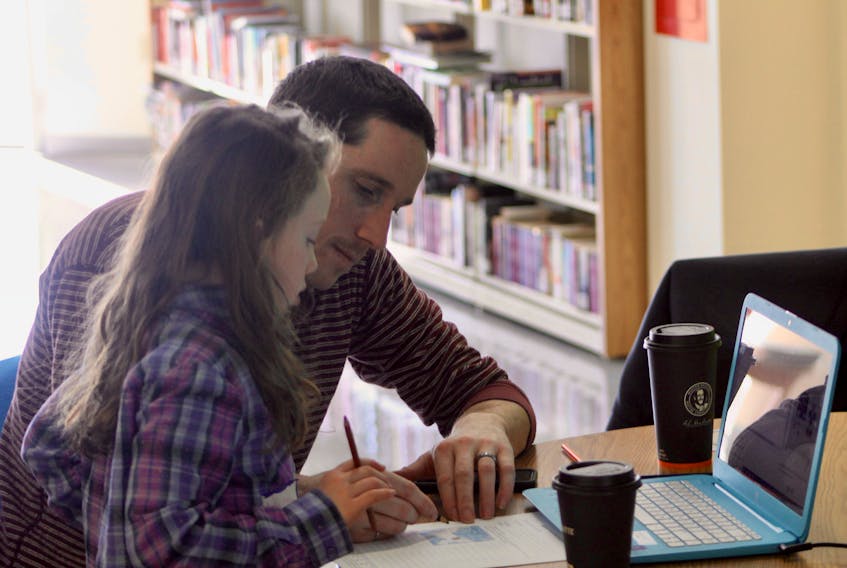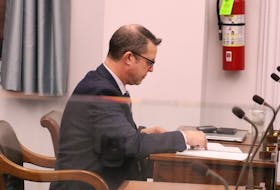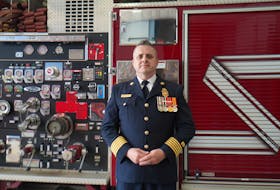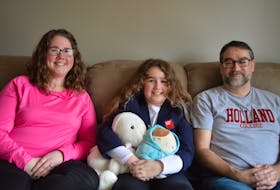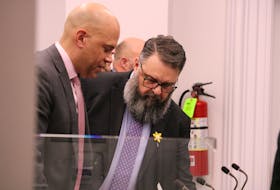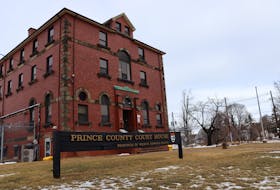MORELL, P.E.I. — Autumn Long, 7, has some big questions about how the universe works.
For instance, how big is it?
“Does space have a floor?” she asked.
“Or does it go on?”
The Mount Stewart girl has taken a keen interest in galaxies, stars and all the unknowns in between. She’s not sure if she wants to be an astronaut because outer space might be dangerous, but she hopes to study it when she’s older.
“There’s a lot of cool things about it,” she said.
“And there’s still questions that we don’t have answers for.”
One skill she may have to learn for this is computer coding. And, she already has a head start.
Autumn took part in a digital skills workshop called Astro Pi: Mission Zero at Morell Public Library on Feb. 15. It was put together by a Montreal non-profit called Kids Code Jeunesse, which held these events at various libraries across P.E.I.

Becca Grimmelt, Kids Code instructor and community developer for P.E.I., said her organization focuses on more than just teaching kids how to code. It also fosters skills like critical thinking and collaboration.
“Kids these days are growing up surrounded by technology.”
“Kids these days are growing up surrounded by technology.”
A large part of Grimmelt’s job is going into classrooms to teach workshops like this one, as well as providing training for teachers to teach these skills themselves. Not a lot of school boards teach digital skills in their curriculums right now, she said.
“We feel it’s our collective responsibility to be that missing step in the school system.”
At a glance
- Part of Kids Code Jeunesse’s mandate is to enable young girls and underserved communities in learning digital skills.
- Research shows girls need to be introduced to computer and STEM fields young for them to pursue it, Grimmelt said. “By the time they’re in high school it’s often too late to get them interested.”
- Having studied engineering herself, Grimmelt is passionate about working with kids, and especially introducing young girls to fields like hers. “Just to give them a high-level taste of what coding is. It’s fun, it’s not scary, it’s not something just guys do,” she said.
- As well, rural communities may not have as much access to education or technologies as urban areas, which is partly why Kids Code wants to get out to the countryside. At the Morell Library event, Autumn Long and her father were the only two who attended, but Grimmelt offered her lesson regardless.
Autumn was tasked with three objectives during Mission Zero – write a message, draw a picture and put together a code that tells whoever runs it what their room temperature was. She used an emulator of a Raspberry Pi, which is a miniature, single-board computer.
All three would then be collected and sent to the International Space Station for its astronauts to read this spring.
But it wasn’t that easy. The entire code, which would include all three objectives, had to be under 1,000 characters so that the file size didn’t became too large to send through space. The astronauts would also be looking at lots of message from across the world.
“We can’t take too much of their time," Grimmelt said. “But we have a good 30 seconds.”
After some careful consideration, Long settled on her message.
“Hello from P.E.I. Please wish my sister, Hazel, happy birthday,” it read.

She figured it’d make a pretty good birthday present, even though her sister will never get to see it.
Long’s drawing had to be coded on an eight-by-eight grid, meaning she used letters instead of colours. This required thinking about the process in a completely new way, but she was able to create a simple depiction of P.E.I.
Her father, Spencer, joined her for the workshop to help her when needed. He’s an engineer and has experience in coding.
Mission Zero was a good opportunity to support his daughter’s interest in space and for her to learn digital skills at a local venue.
“To get her interested in the topic,” he said.
“Getting the analytical mind going.”

